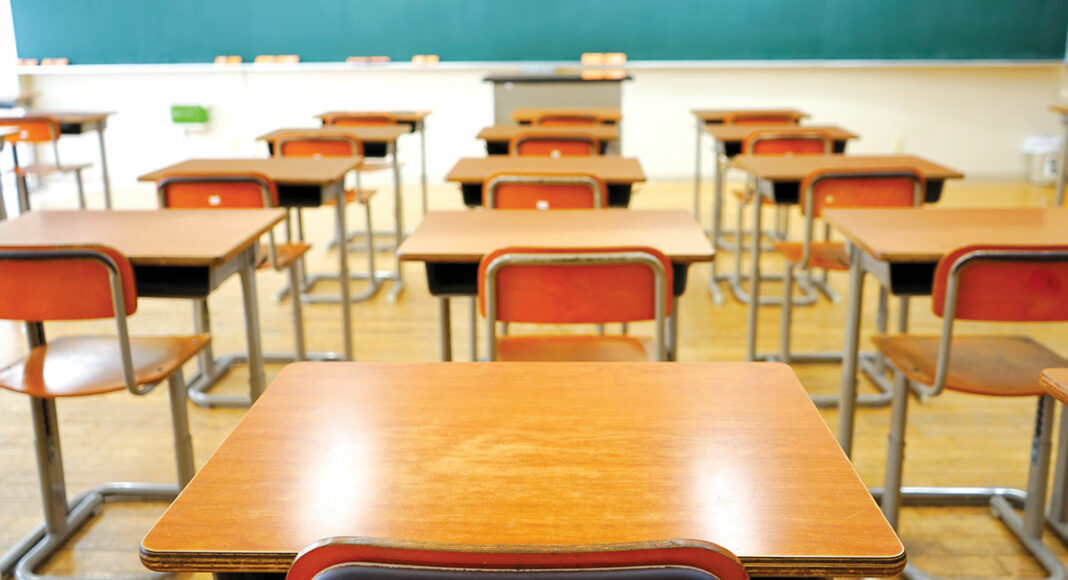At least three Santa Cruz County charter schools received funds through the federal Paycheck Protection Program (PPP), the $660 billion initiative created to use taxpayer dollars to help keep small business and nonprofit organizations afloat.
Watsonville Prep School, the biggest such recipient locally, received more than $1.7 million. Santa Cruz-based Pacific Collegiate School (PCS) and Watsonville-based Ceiba College Preparatory Academy both took in loans in the $350,000-$1 million range—joining hundreds of charter schools across the U.S. that received millions of dollars in PPP aid, according to data from the Small Business Administration (SBA).
The federal government says the low-interest PPP loans can be forgiven if borrowers use at least 60% of them to cover payroll costs.
The fact that charter schools used their status as nonprofit organizations to apply for the funds, while public schools are ineligible, has rankled education officials who say the charter schools are double-dipping by also accepting public education dollars.
Public schools, meanwhile, cannot receive the funds because they are funded by taxpayer dollars, says Nina Ramon of the Washington, D.C.-based U.S. Small Business Administration.
The controversy over PPP rollout is not unique to charter schools. While the program has been a lifeline to local businesses, large companies like Shake Shack returned their loans after public backlash from people who say the money was meant to help small businesses weather shutdowns related to Covid-19. Loan recipients also included publicly traded corporations and businesses with ties to President Donald Trump’s friends, family and associates.
Nationwide, charter schools received as much as $2 billion in PPP loans, says Carol Burris, executive director of the Network for Public Education.
That number is likely a low estimate, as loans in lower amounts are not made public, she says.
The trouble, Burris says, is that the PPP funds were intended to support small businesses and organizations that could not make payroll after a loss in revenue due to Covid-19.
Charter schools, she says, never lost their revenue.
“We know of no other organizations that are fully funded by taxpayer dollars, that are also receiving PPP funding,” she says. “Charter schools did not have the interruption in income that prevented them from meeting payroll.”
Maria Reitano, head of school for Pacific Collegiate, says PCS used the majority of its forgivable loan to pay employees so that the school can continue providing services to students and families during the pandemic.
“A small portion of funds received were used to pay rent on our school facility, an expense that schools in the district context do not incur,” she tells GT via email.
Reitano additionally says the pandemic created unforeseen costs, and she adds that some potential budget cuts to California’s education system could impact charter schools, including PCS. The state will defer an estimated 20% of PCS’s State funding for this year until summer and fall of next school year, she says.
NAVIGATION TOOLS
Kirsten Carr of Navigator Schools, which runs Watsonville Prep, says the school’s loan helped protect 182 jobs, which in turn provided services to the organization’s 1,250 students after Covid-19 forced schools to close.
Carr explains that, as a nonprofit organization, Navigator was eligible to apply for the program.
Carr says Navigator saw financial impacts from the pandemic—as did school districts throughout the U.S.—including from providing iPads for all of its students, hotspots for families without internet, daily live instruction and meals.
“These services and support impacted our overall operational budget and the PPP was able to help ward off employee and service reductions,” she says.
Carr adds that public charter schools don’t have access to some of the same funding as school districts, such as bonds.
Ceiba Head of School Josh Ripp says the school applied for its PPP loan to help protect more than 100 jobs after Covid-19 hit. “Given the financial landscape we found ourselves in, it was prudent to participate in this program,” he says.
Many local private schools pulled in PPP money.
It’s difficult to get a clear look at the data because larger loan recipients had the dollar amounts of their loans withheld, and recipients of smaller loans had their names withheld. Also, the SBA has misreported the loan sizes of many businesses and nonprofits around the country, including at least two in Santa Cruz County.
However, according to the best data available, Santa Cruz County educational institutions—including charter schools, private schools and a couple small colleges—pulled somewhere between $6 million-$16 million in total.
INKING FEELING
Nina Rees, CEO of the National Alliance for Public Charter Schools, says that charter schools are eligible for the same education funding as public schools since they are part of that system.
“Charter schools are tuition-free, open-enrollment public schools,” she says. “They are usually set up as nonprofit organizations, some of the very entities identified under the Coronavirus Aid, Relief and Economic Security (CARES) Act as eligible for PPP loans.”
Rees says that charter schools must bear the burden of paying their own mortgages, rent and utilities and raise money to cover them—something that can be difficult to do during a pandemic.
According to Rees, 60% of charter schools are single-site, independently run organizations with small budgets.
Rees says that about 1,700 charter schools that are not part of a public school district are not guaranteed funding under the CARES Act funds.
That is not the case with PCS, Ceiba and Watsonville Prep, all of which receive Average Daily Attendance funds from their respective school districts.
Burris says charter schools are eligible for certain funds from their own national organizations.
“To our way of thinking, this is really unethical,” she says. “The PPP is designed to support paycheck protection. Not bonds, not adding a wing to a charter school. One purpose—to prevent the nonprofits from laying people off because they are no longer getting the income.”
Additional reporting by Jacob Pierce.














